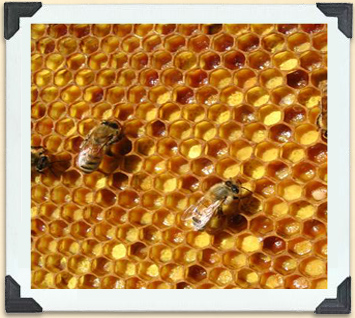The Keeper

Bees on a frame of cells full of pollen.
© University of Manitoba
Pollen
Bees rely on pollen as a source of protein. They collect it from flowering plants. If you look closely at a bee, you may see pollen stuck to her hairs or bunched on her hind legs. Beekeepers use special traps to collect pollen, and then sell it for its perceived health benefits.
Pollen is marketed as a supplement that can boost the immune system and provide many other benefits.








